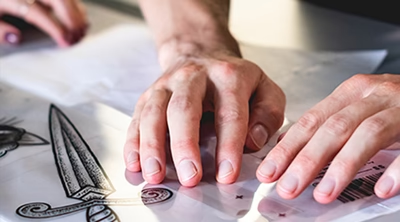Practices that you can Opt to Keep Your Screen Printing Platens in Good Shape
What is a Platen?
You might be thinking, "What is a platen?" or what does platen mean, and how does it relate to screen printing? Right? So, here's the answer.
In screen printing, platen refers to the flat board or pallet upon which you place your substrates, like T-shirts or posters, while printing. It acts as a stable base, ensuring your designs are accurately and consistently imprinted. For professional looking prints, high-quality platen for screen printing is required, making it indispensable for any screen printer.
Importance of Platen Adhesive
Platen adhesive, also known as plate adhesive or printing adhesive, plays a crucial role in various industries, particularly printing and manufacturing. Its importance can be highlighted in several ways:
Preventing Movement: Platen adhesive is crucial in ensuring that the substrate, whether fabric or paper, remains stable and immovable throughout the printing process. This becomes particularly vital when dealing with multiple colors, demanding precise alignment to yield prints of the highest quality.
Ensuring Precision: Achieving proper registration, the exact alignment of various colors and elements in the printed design is paramount for creating a professional appearance. Platen adhesive comes to the rescue by steadfastly holding the substrate in place, guarding against potential misalignment challenges.
Elevating Print Quality: With the substrate securely anchored, the result is consistent and sharp prints every time. Without platen adhesive, the material could wrinkle or shift during printing, leading to prints that are either blurry or misaligned.
Boosting Efficiency: The use of platen adhesive significantly diminishes the need for manual adjustments and reprints caused by misalignment. This improvement substantially enhances the overall efficiency of the printing process, saving valuable time and resources for both small-scale and large-scale printing endeavors.
Minimizing Wastage: Firmly secured substrates translate into fewer misprints and less material wastage. This aspect holds exceptional importance in commercial printing, where reducing waste is fundamental to maintaining cost-effectiveness and ensuring sustainable printing practices.
Best Practices for Platen Maintenance
Here are several practices that you must follow to keep your platen for screen printing in good condition:
Regular Cleaning
Clean your platens after each print run. Use a light detergent and a gentle brush to remove ink residues, adhesives, and other contaminants. Keeping them clean prolongs their lifespan and maintains the quality of your prints.
Proper Storage
Store your platens in a cool, dry place distant from the sunlight. Extreme temperatures and humidity can warp the planet, affecting its flat surface. If you store them properly, it ensures they remain in ready-to-use condition and remain in shape.
Inspect for Damage
Regularly inspect your platens for signs of wear and tear. Look out for scratches, dents, or adhesive buildup. Replace damaged platens promptly to avoid compromising the quality of your prints.
Use High-Quality Adhesive
Invest in a reliable platen adhesive. High-quality adhesives provide a strong grip and are easier to clean, ensuring that no residues interfere with your printing process.
Adjust Pressure and Tension
Calibrate your screen-printing machine properly. Incorrect pressure or tension can lead to uneven prints and, over time, damage the platens. Regularly check and adjust these settings to maintain consistent print quality.
Regular Lubrication
Ensure that all moving parts, especially hinges and joints, are well-lubricated. Regularly applying lubricants prevents friction, reduces wear and tear, and extends the lifespan of your platens and printing equipment. Consult the manufacturer's guidelines to use the appropriate lubricant for your machine.
Implement Rotation System
If your printing workload is high, consider implementing a rotation system for your platens. By rotating the use of platens, you distribute wear and tear evenly across all your platens. This prevents the overuse of a single platen, ensuring a longer lifespan for each one.
Conclusion
The platen is the unsung hero in screen printing, and the platen adhesive is its trusty sidekick. By understanding their significance and following best practices for maintenance, you can ensure that your platen for screen printing remains in excellent condition, allowing you to produce high-quality prints consistently. Remember, a well-maintained platen improves your printing results and prolongs the life of your screen printing equipment, making it a valuable asset for your business. So, embrace these practices and keep your platens in top-notch shape for flawless screen printing experiences.

.webp)


Comments
Post a Comment